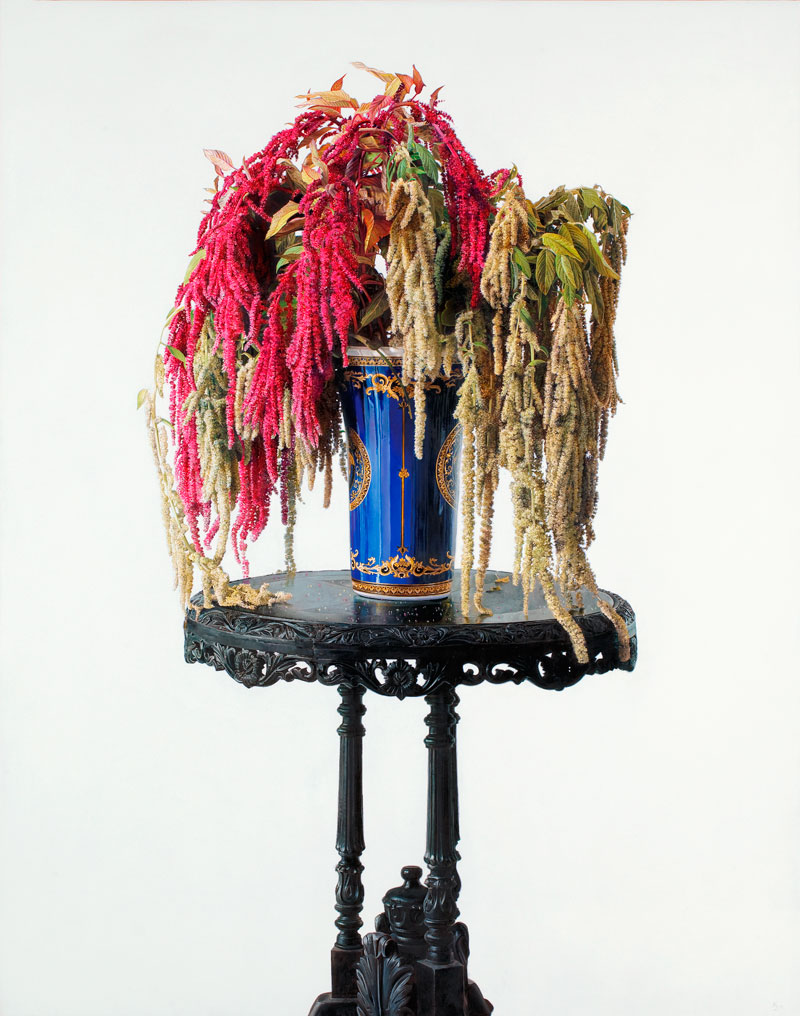
"Are artists the last magicians?” asks curator Lisa Slade. “Your door is my wall; your wall is my door” wrote Rebecca Solnit.[1] So what transforms walls into doors for me? Magic Object has something for all tastes. In response to the curatorial brief of Wunderkammer, “the early modern room of wonders … dedicated to displaying works and objects endowed with magical properties”, also as curiosities, a diverse range of practices are presented. Each work carries the considered thought and care of its maker; while overall there is as an explosion of decorative device, of excess, and immediacy, a few quieter moments make their presence felt. As the curator acknowledges, “[h]ere ornament is no crime”.[2] When in the early twentieth century, modernist architect Adolf Loos declared ornament to be a crime, he was rejecting the excess interior decoration of the late nineteenth century in favour of clean surfaces unadorned by fenestration and object clutter. So much has happened since then! (Vale Zaha Hadid).
Gareth Sansom’s paintings are euphoric, spirited and playful works by someone comfortable enough with his materials to forget them and mark out patterns of becoming, invocations, and traces of his realities. Sansom chooses Shakespeare’s King Richard III’s plea for moral understanding as the title for his impressive triptych, And thus I clothe my naked villainy with odd old ends stol'n out of Holy Writ, And seem a saint when must I play the devil (2013–15). A massive work of the painful dark humorous joy of a flawed, vibrant and possibly Catholic life, he’s been around long enough to have seen fashions come and go, to have been in the midst of modern–post–modernism, and to have accumulated the material for stylistic quotation and alchemy.
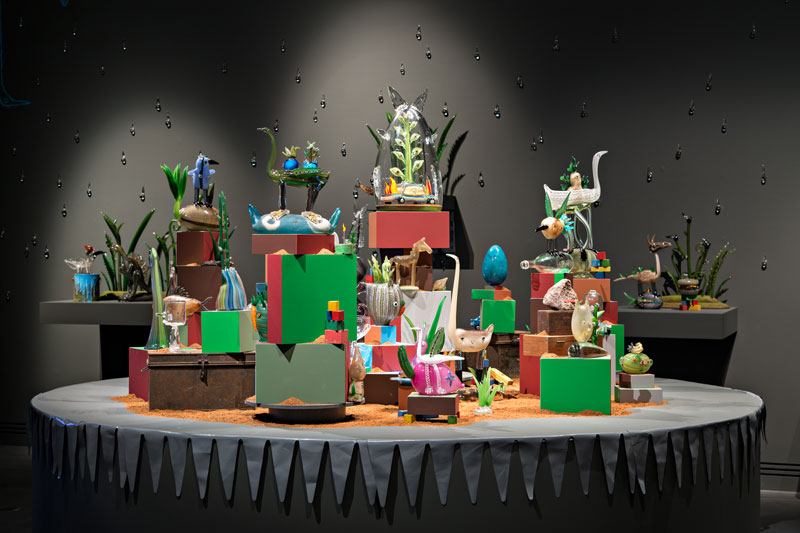
Dutifully and freakishly meticulous, Michael Zavros copies floral bouquets arranged in glorious vessels some of which are strategically placed objects from AGSA’s collection. These are breathtakingly beautiful and perfect renditions of flora that demand and get large walls. Sideshow Bob (2015) grabs my attention — grace, beauty, life/death and decay with a nod to metaphor and absurd bad taste (Sideshow Bob is the insane character in The Simpsons).
Ramesh Mario-Nithyendran’s Fuck You at the Samstag Museum faces the door in company with a crowd of hand-formed, life-sized secular deities placed on un-museum like plinths: a couple of which reference bathroom tiles (the public rest rooms of casual sex perhaps); Fuck You stands on a cardboard box, while the magnificent Self Portrait With Third Leg stands on a zig-zagged shape that makes me think budget 1990’s building façades. Each of the deities are wild and immediate and seem to be in the process of becoming a different kind of being – mud and glaze transformation if you like. Fluid in-between cultures, genders, beauty, decay, soft, hard, form and formless, over-embellished and decorated –these are gorgeous works of humour and zest.
Lisa Slade has privileged works of joy in her selection for Magic Object, along with generosity in the sharing of stories; listening to Roy Wiggan and the vocalising of stories in language from the Bardi people in Western Australia is a powerful experience that extends the stillness of objects beyond the museum walls. Tiger Yaltangki, an Anangu man from the APY lands in South Australia, paints characters that blend Pitjantjatjara Mamu Spirit Beings with characters from Dr Who and The Mighty Boosh – one of the craziest and most absurd TV comedies ever – into totally engaging faces that exhibit a playfulness affectively expanding mythologies both ancient and recent.
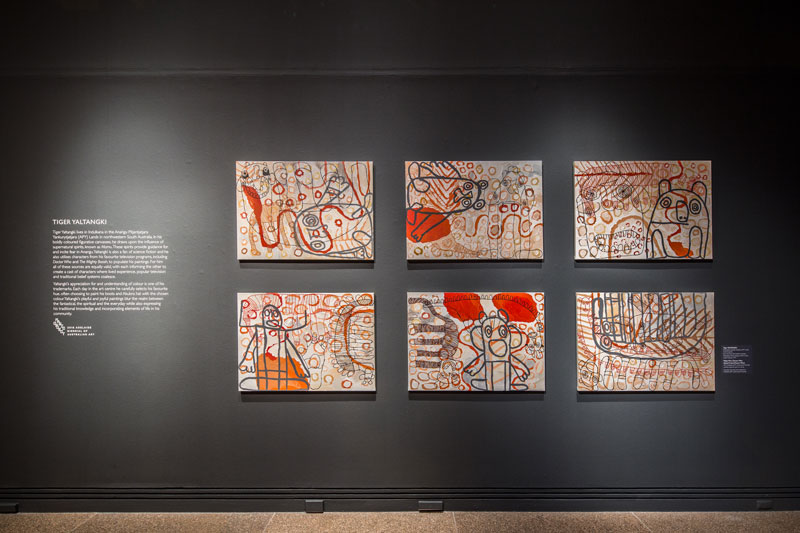
Tarryn Gill, also on exhibition at the Samstag, pays homage to the array of collected objects in the Freud Museum, London. Mostly arranged in an inward facing circle, her delightful sound-making Hayao Miyazaki-like characters resist any direct reference to the psychoanalyst’s work on animism and magic in Totem and Taboo, and present instead an other world right here. Nell, too, plays with face and spirits through thirty-plus hand-built clay vessels, each adorned or inscribed with incantations or snippets of things that may be said or overheard. Koanashi, literally faceless, is the name of the key spirit in Miyazaki’s animation Spirited Away, and here he appears with feathers. Koanashi is an extremely lonely and hungry spirit whose intense grief demands appeasement in the bathhouse for spirits. Like Tiger Yaltangki, Nell borrows characters. Most of her face-spirit vessels sit on found stools, and all face the same way like a choir about to burst into sound for the audience who notices.
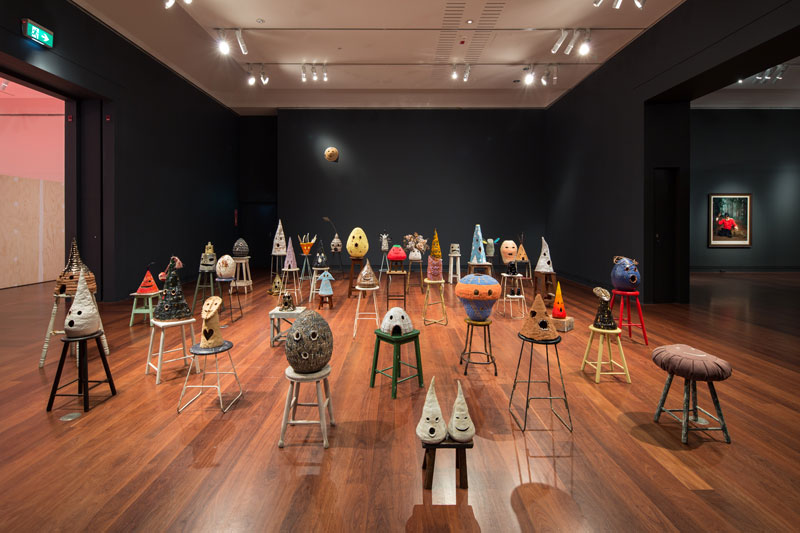
Magic Object is a collector’s show that wants to bring together the past and the present through works of art, with a hope that artists can change the future world through the wonder, and/or, the shock of illusion. Its affect on this writer is joyous at best, and at times unnecessarily excessive and squeezed. Despite reservations about a too broad and at times shoehorn curatorial brief it does give much pleasure and food for thought. But some works are compromised by their installation. On the edge of whimsy and darkness, Fiona McMonagle’s delicate and accomplished watercolours feel out of place, unfairly squeezed as they are between Tom Moore’s jubilant excess of colour and gloss and Gareth Sansom’s fully saturated paintings. The darkness of the often-fraught relationship between girl siblings in Sisterly Love is palpable, as are the telltale bloodstains on the feet of the girl with the cat mask. To my mind, the cutouts on plastic grass are too squashed in the space to work affectively, and instead give the impression of a too-literal translation of animating life.
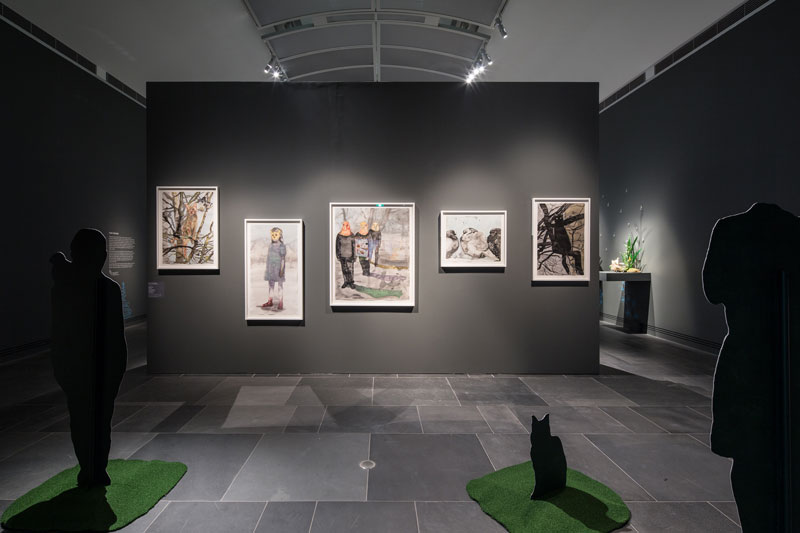
And, while Tom Moore’s venetian glass characters are thoroughly gorgeous things, some of them worlds unto themselves, the clumsy display doesn’t do him justice. Tom’s work is also installed as part of the distributed Biennial at the Adelaide Botanic Gardens in the Museum of Economic Botany, where it provides a perfect expansion to the wondrous collection of vitrines displaying plant material and respective routes between place, commodity, and cultures.
When Rebecca Solnit penned “Your door is my wall; your wall is my door” she was gently making clear that the means of transformation from the mundane to the extraordinary isn’t universal. So what transforms walls into doors for me? In a world awash with attention-grabbing bytes, aural and visual quiet is what makes me pay attention; if not quiet, then the space and time needed to experience a work. And, in terms of the power of incantations – in metaphysical terms an incantation is also a kind of prayer, or a sutra – it's worth paying attention to the titles of the artworks and the objects on display. As such a few artists stand out at the very limits of the curatorial brief.
Louise Haselton’s Empty Fort Strategy (2016), for example, is a title that makes me wonder. Foregoing explanation or provocation, it simply orientates with a great deal of wit. Haselton makes an affective space, felt emotionally and literally. Her works show strategic restraint in their concern with “weight and heft” and humour. Louise’s objects have the look of squares that want to be circles. Textiles, beauty and formal concerns have long been at the heart of Haselton’s sculptural installations. Materials seemingly at odds with each other are common, as is a propensity at times to make her alliance of materials purposefully clumsy. Here, textiles and fabrics are referenced in a series of purpose-built concrete and perspex vitrines. Asymmetric Engagement (2015) consists of five white classic museum plinths as support for the smaller sculptures: concrete and perspex form rectangular boxes around an empty centre – circles squared.
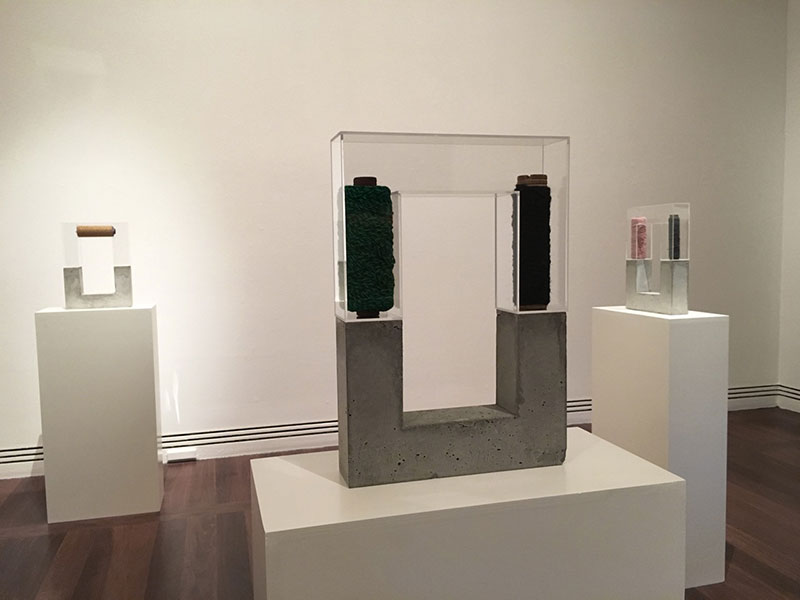
Atop varied surfaces within each strange enclosure (earth–sky / floor–window), sit aged wooden spools of cotton and wool thread, their potential unrealised. Strike of non thought (2016) is a much larger vitrine than the other five; it is square on a hefty base of concrete, inside is a monumental cake (the term given to wound fibre ready to use) of sisal thread. Sisal is made from the agave plant and used to make everything from cloth and carpet, to rope and paper. It is the fibre extraordinaire of global trade and history. Haselton’s indirect titles have the sound of Chinese lateral thinking, intensely cerebral but also poetic, less a literal instruction and more a disposition.
Empty Fort Strategy continues the monumental with a large square expanse of saddlery felt, split vertically down the centre. In turn, the legs of denim jeans make another square within the total field. For me, this a very personal work, humorous and deadly serious, perhaps even a philosophy for life. The final devastatingly beautiful work in Haselton’s installation, guesthost (2016), is the compound title of a work in which the weft is made with short lengths of wooden dowel painted white, ends left exposed, while the warp consists of massive strips of lead. Lead is both metal and pliable, both poisonous and enticing; the confusion between the weft/woof and the warp further plays on this fascination with death in life. Sublime in its formal insistence, guesthost is evasive, playful and witty. Overall, her installation of works collectively exhibit elegant resistance, playing strategy against any over-arching narrative placement of the work. As the key image accompanying Gemma Weston’s catalogue essay, “Twenty-first century animism”, it is an apt choice for an essay that considers the historical lineage of these key themes.
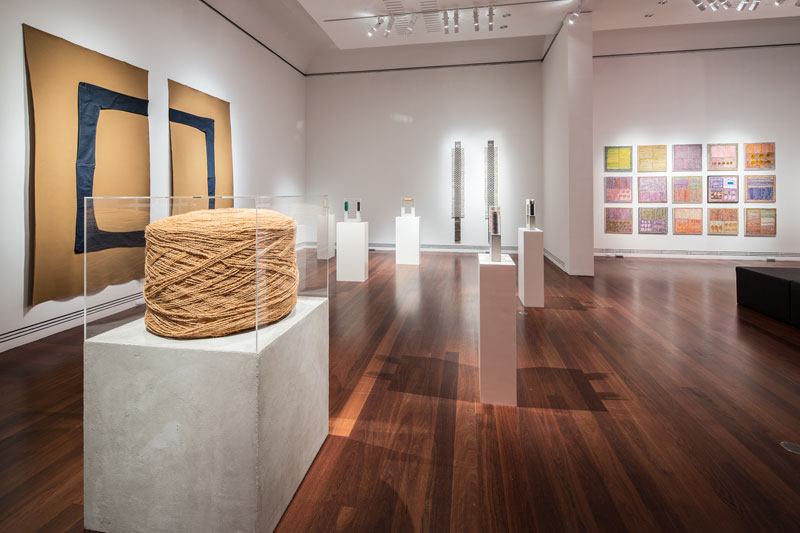
Clare Milledge's Betabu Lodestone (Extended Play) (2016) and Night Weeders and Watcher with Unresolved Pineapple (2016), sends me the way of ritual and shamanic magic, open to shadows and the flux and flow of hallucinogenic experience, to failure and arcane knowledge. Resisting the drive for mastery and seamless perfection in the arrangement of her repurposed, recycled materials – the assemblages impart a sense of an event stopped in process, of performance past or yet to come. In this way they create a mesmeric atmosphere. Photos really don’t do Milledge’s work justice. They are best experienced in the flesh where currents of air move the swathes of woven diaphanous cloth over a mix of alchemical materials.
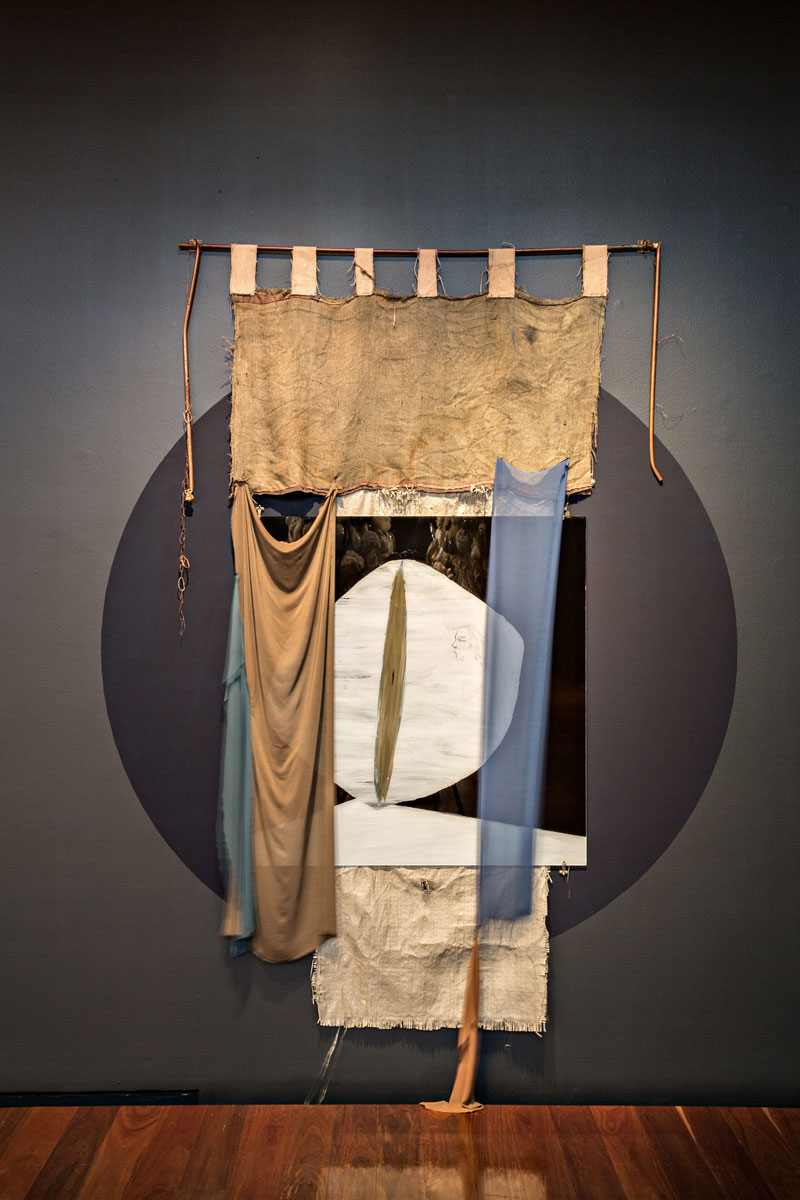
Chris Bond has built an entire reputation in the artworld as a manufactured identity, through his alter-ego and shamanic identity, Tor Rasmussen, evidenced through documentation and by-products – published books, libraries, publishing houses, ISBN codes and an email address (kraken666@internor.com) as, a Norwegian death metal figure. Rasmussen as Bond’s doppelgänger is “muse, master and alter ego”. As with conceptual art of the 1960s and 1970s, the works presented are the documentary proof of private actions. After the fact, these remainders are hand-crafted and painted simulacra (copies for which there are no originals) of non-existent publications embedded within the wall of the gallery as so much debris from a collision with another dimension – demonstrating to this viewer that space is curved and not simply that which is enclosed by walls or defined by objects within it.
Chris Bond lives in the same house as Rasmussen, who can show himself at any time, often at night. Blurred dark images of backyard experience were shown by Bond during the artists’ panel session. This is where madness and magic collude. Not quite Antonin Artaud but certainly in the realm of the schizoid personality able to articulate a complex experience. You had to be there. Bond produces the paradoxical mimicry of the very artifice his dark doppelgänger mocks. His titles are virtually untranslatable – mortgin kinerok eir sig cranchniholtvagen, “margin of himself”? – a title of one of his meticulously made objects that appears to be a book so precisely mimicked that it becomes a book.
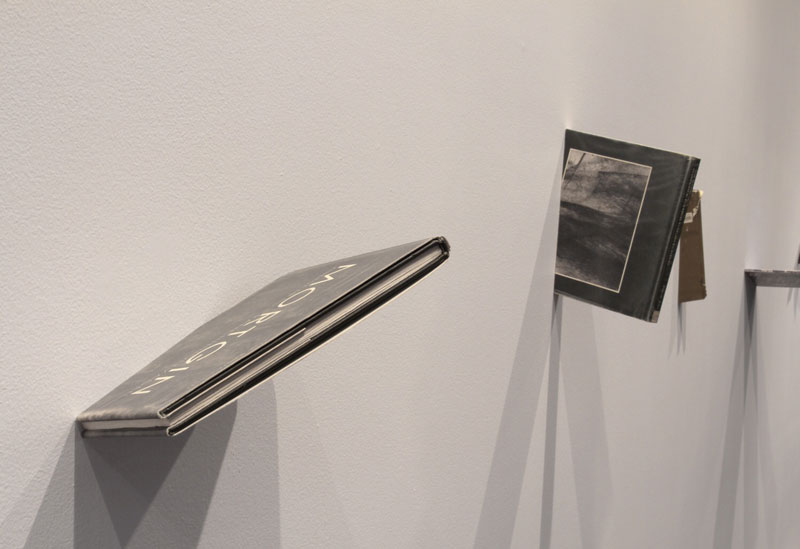
The works of Louise Haselton (AGSA) and Chris Bond (Samstag) most challenge, in different ways, this overt excess of things, the alliance between the maker as artist and truth as object, breaking a direct correlation between visibility, meaning, and place in the world. Haselton resists telling or knowing, while Bond makes clear the mutability of truth. Clare Milledge’s assemblages along with Chris Bond’s installation, could do with more considered space, they are overwhelmed by Juz Kitson’s suspended and wall-mounted pieces: strange inside-out pendulous collections of weirdly unporous and totally dry ceramic objects, fur, feathers, beads, knitted sacks – way too unwet for things that seem to come from inside life.
Most of the thinking Magic Object has invoked for me has danced around the status of the object as thing-in-the-world? There’s no doubt there’s been a return to the object and the pleasure of materials, both as a political and social strategy, and as a reaction to the commodification and digitisation of just about everything. The oh so human drive to make and to adapt things and thoughts in and of the world is a given. I'm skeptical though as to whether the anthropomorphic view of the world has anything productive left to offer. Wisdom isn’t about transparency or about knowing, sometimes it is about not knowing, being mystified, and even giving something time to make sense.
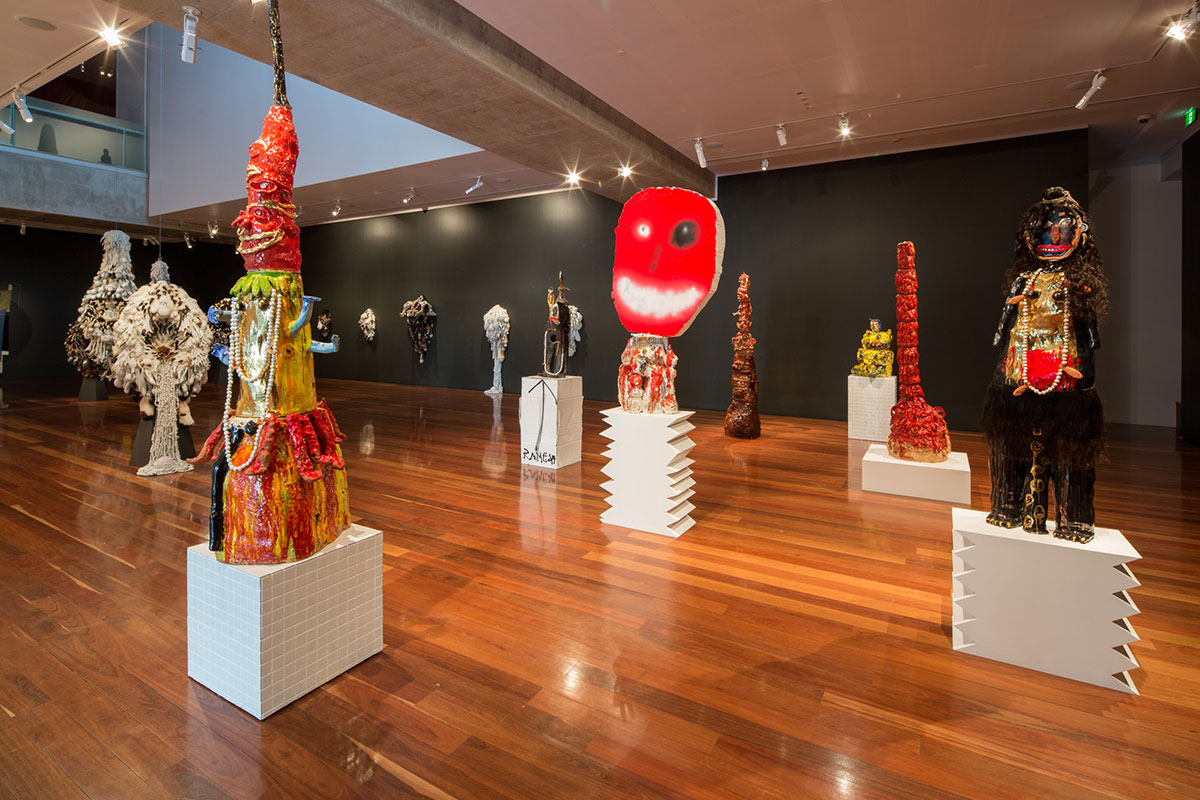
Now that the modernist project of progress is called into question and its remainders return as social exclusion, diaspora, and environmental damage, can the concept of magic be helpful? In many ways, Magic Object is a kind of nostalgia for the days when people thought they were in charge and artists were all artisans, a kind of market-positioning for art as product, as in artisanal beers and hand-knitted clothes. Magic Obect is also a rebalance toward the very real pleasure of making and experiencing things unattached to consequence. The Adelaide Bienniale of Australian Art is what it is – a celebration of the processes of life and the material things artists make, by an institution that attempts wholeheartedly to stay in tune with rapidly evolving, difficult and increasingly conservative times.
In her considered catalogue essay Lisa Slade traces a historical lineage of recent exhibitions related to the Wunderkammer – “the early modern room of wonders where curious objects were amassed for private pleasure”. Do take time to look at the Cabinet of Curiosities from the Collection as inspiration for the Biennial; it includes two recent acquisitions of exquisite ornamentation, a narwhal tusk, a coconut de mere (beautiful buttocks), spider web architectures by Sandra Selig, and the precursor to speculative architecture, Giovanni Battista Piranesi, with an etching from the Imaginary Prisons series.
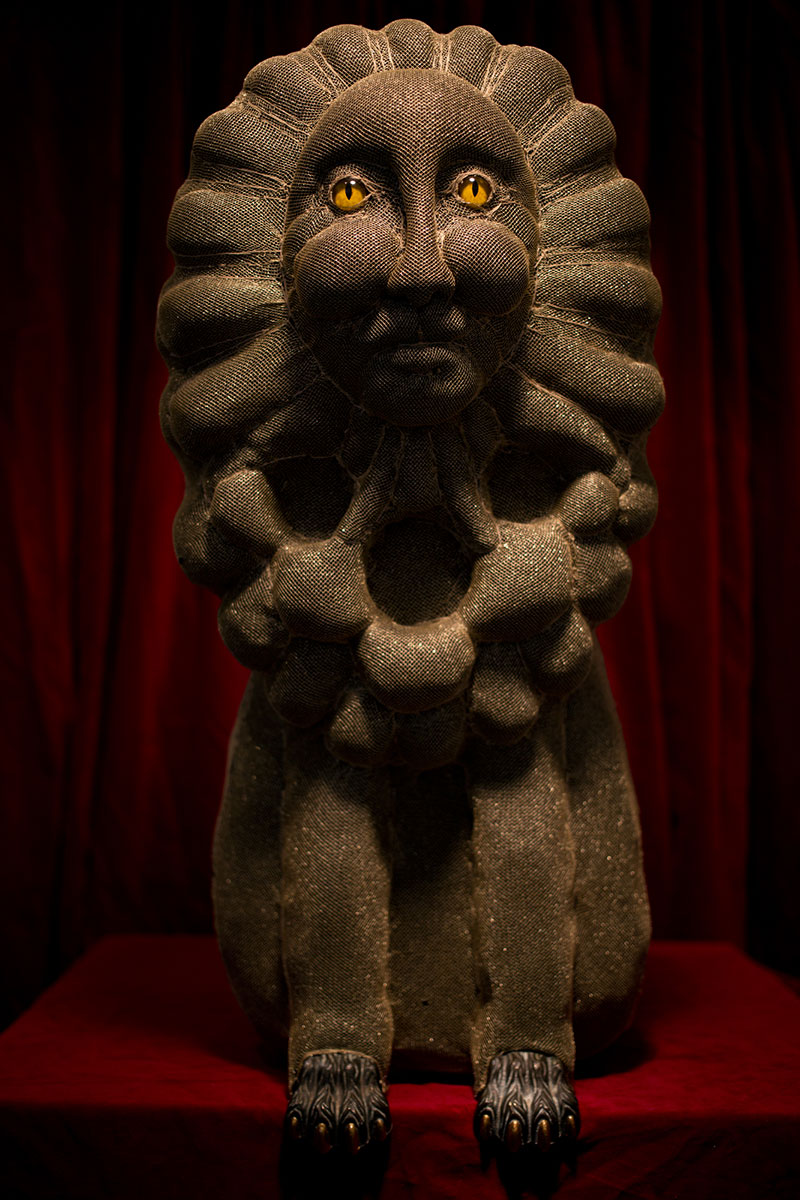
Footnotes

